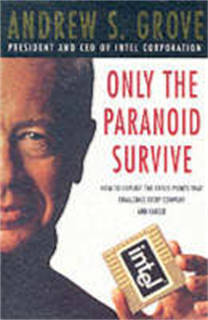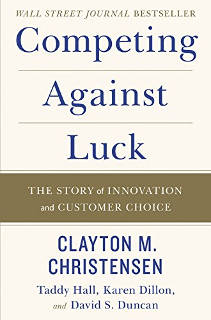[Photo by Julia Nastogadka on Unsplash]
Dear friend,
Enterprises around the world have been hit by a digitisation wave. Some of them have seen this coming and have taken steps to ride it, many are overwhelmed by the change this wave is bringing about and are trying to keep their head above water, while most are furiously paddling to rise above the water and take a breath.
It’s not easy to define digitisation. There are numerous interpretations to it. Some see it as a coming together of several technologies that have changed the nature of their business; others see it as an opportunity to re-examine deep-rooted beliefs and assumptions about their businesses and industries.
Andy Grove, Intel’s influential former CEO used the term Strategic Inflection Points: “that which causes you to make a fundamental change in business strategy. Nothing less is sufficient”. Digitisation fits this definition. While digitisation might be a new wave, there have been several such waves before. Grove explains some of them in this talk in 1998.
It’s easy for businesses to get overwhelmed with all these changes happening around them. In the noise, unable to prioritise or get clarity on what it means to them, enterprises may get caught up with implementing the next shiny new thing disguised as digitisation. It's a big temptation to resist. But the wiser enterprises are using this opportunity to focus back on the most basic building block of business—the customer.
Peter Drucker, the management guru, once said “The purpose of business is to create a customer.” This is as simple as it gets, but many enterprises don’t see this as clearly. It’s important to understand why your customer is buying from you (or not buying from you) since this keeps changing over time. So, keeping a strong sense of their needs is not just a necessity but a reason for the enterprises’ survival.
How do you keep track of your changing customer needs? How do we know why they are buying from us? What journeys do they take to complete their tasks?
Understanding the customer’s jobs to be done is a good starting point. The idea, originally developed by HBS professor Clayton M. Christensen, says that customers hire your product to complete a job they want to get done. In a well-told example, Christensen identified that one reason a customer hires a milkshake is to be his or her companion on a long morning ride. The minute one understands the customer jobs to be done from this perspective, what you want to do with your customer and product becomes very apparent. This is a potent lens through which one can look at digitisation and make sense of the technologies promising panacea for all your business ills.
Keeping the customer’s jobs and journeys at the core will help enterprises see through the clutter and focus on the core issues that will keep them in business.
Have a great week ahead!
CS Swaminathan
Featured Story
The future of food, social media platforms and facial recognition

[Facial Recognition Art Mural, Hollywood CA #bornmodern. Image by YO! What Happened To Peace?, under Creative Commons]
April 27, 2019: A roundup of news and perspectives on disruptive technology from around the world. In this issue: Sri Lanka’s social media ban, Beyond Meat IPO, facial recognition, employee activism, robot rights and more. (By N S Ramnath. Read Time: 5 mins)
What We Are Reading
The digital dilemma: Optimising board composition in the digital era
How should boards keep pace with technology trends? Hiring a ‘digital director’ is not the only answer.
Only the Paranoid Survive by Andrew Grove

In this business classic, Andy Grove talks about the strategic inflection points—the key moments of change—that can sweep through any industry. How do leaders spot them and exploit them?
Competing Against Luck by Clayton Christensen

Clayton Christensen explains the “jobs to be done” approach to innovation success—that customers don’t buy products or services; they “hire” them to do a job. Understanding these jobs, he argues, will help companies develop products and services customers are willing to pay premium prices for.
From Our Archives
Clayton Christensen on innovation: Finding the jobs to be done

[Photograph by Betsy Weber under Creative Commons]
According to the famed business professor, innovation is about finding the “jobs to be done” in our lives. (From CKGSB Knowledge. Read Time: 5 mins)
What is “phygital” and why you should care about it

[Image by Gerd Leonhard under Creative Commons. Image cropped from original]
People move seamlessly between the physical and the digital world. Shouldn’t your consumer experience too? A four-step model shows how to create a better experience. (By Amrita Chowdhury. Read Time: 10 mins)


